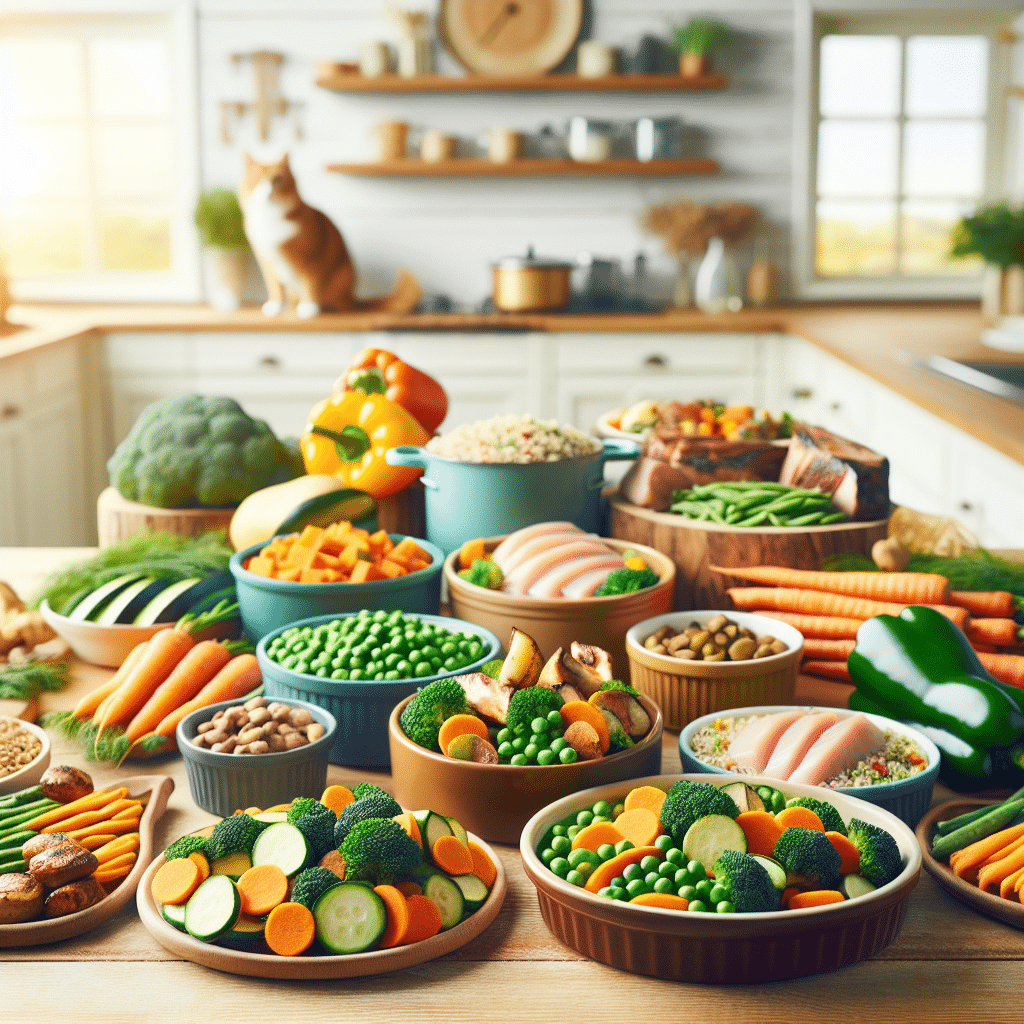Understanding Your Dog’s Nutritional Needs
A balanced diet is paramount for your dog’s overall health, and vegetables play a significant role. They provide essential vitamins, minerals, and fiber that contribute to a dog’s wellbeing. It’s critical to ensure that any homemade dog meal has a balanced nutritional profile and is tailored to meet your dog’s specific dietary requirements based on age, weight, and health status.
Benefits of Including Vegetables
-
Vitamins and Minerals: Vegetables are packed with vitamins A, C, and K, along with essential minerals. For example, sweet potatoes are rich in beta-carotene, which converts to vitamin A, crucial for vision and immune function.
-
Fiber: Vegetables add fiber to your dog’s diet, which aids in digestion and promotes a healthy gut. This can help prevent constipation and promote regular bowel movements.
-
Low in Calories: Vegetables are generally low in calories, making them an excellent choice for weight management.
-
Antioxidants: Many vegetables contain antioxidants that can help combat oxidative stress and inflammation in your dog’s body.
Selecting the Right Vegetables
Not all vegetables are safe for dogs. Here’s a list of dog-friendly vegetables that you can incorporate into meals:
- Carrots: Great for dental health and low in calories.
- Green Beans: Excellent source of fiber and vitamins.
- Sweet Potatoes: Nutrient-dense and a good source of complex carbohydrates.
- Spinach: Packed with iron and vitamins, but should be fed in moderation.
- Pumpkin: Good for digestive health due to its high fiber content.
Meal Preparation Guidelines
When preparing homemade meals for your dog, follow these guidelines to ensure safety and nutritional value:
-
Consult Your Vet: Before changing your dog’s diet, consult your veterinarian to ensure the new meals meet their nutritional needs.
-
Cook Vegetables Properly: Some vegetables may need cooking to break down tough fibers and make them more digestible. Steaming or boiling until tender is usually sufficient.
-
Avoid Harmful Ingredients: Some human foods are toxic to dogs, including onions, garlic, and certain spices. Always research any new ingredient before including it in your dog’s diet.
-
Balanced Diet: Consider combining vegetation with proteins such as chicken, fish, or beef, along with wholesome grains like rice or quinoa.
Recipe 1: Veggie-Loaded Chicken Stew
Ingredients:
- 2 cups chicken, diced
- 1 cup carrots, chopped
- 1 cup green beans, chopped
- 1 cup sweet potatoes, diced
- 4 cups low-sodium chicken broth
Instructions:
- In a large pot, combine chicken broth, chicken, and sweet potatoes. Simmer on medium heat for 10 minutes.
- Add carrots and green beans. Continue to simmer until all ingredients are thoroughly cooked, approximately 20-30 minutes.
- Allow to cool before serving, and store leftovers in an airtight container in the refrigerator.
Recipe 2: Beef and Broccoli Bowl
Ingredients:
- 2 cups ground beef
- 1 cup broccoli florets
- 1 cup spinach, chopped
- 1 cup quinoa, cooked
- ½ cup carrots, shredded
Instructions:
- In a large skillet, cook ground beef until browned. Drain excess fat.
- Add broccoli and spinach to the skillet. Cook for 5-7 minutes until the vegetables are tender.
- Stir in cooked quinoa and shredded carrots. Cook for an additional 2 minutes.
- Cool completely before serving. This meal can also be stored in the fridge for 3-4 days.
Recipe 3: Fish and Vegetable Medley
Ingredients:
- 2 fillets of salmon, skinless
- 1 cup zucchini, diced
- 1 cup carrots, grated
- 1 cup peas
- 1 tablespoon olive oil
Instructions:
- Preheat the oven to 350°F (180°C). Place salmon on a baking sheet, lightly brushed with olive oil.
- Roast salmon for 15-20 minutes or until cooked through.
- In a saucepan, add zucchini, carrots, and peas. Steam until tender.
- Flake the salmon and mix it with steamed vegetables before serving. Let it cool.
Nutritional Supplements
Incorporating a high-quality dog food supplement can ensure additional nutrients that may be missing from your homemade meals. Always choose supplements that are veterinarian-approved.
Storage and Serving
Always make sure to store homemade dog meals in airtight containers to maintain freshness. Serve meals at room temperature for optimal flavor and digestion. Portion sizes should be adjusted based on your dog’s size, weight, and activity level.
Monitoring Your Dog’s Health
After introducing homemade meals into your dog’s diet, monitor their overall health and behavior. Look for signs of allergic reactions or digestive changes such as diarrhea or vomiting. Regular veterinary check-ups will help ensure that your dog’s diet remains balanced and healthy.
Conclusion
By incorporating these vegetable-rich recipes into your dog’s diet, you can greatly enhance their nutritional intake and quality of life. Vegetables not only provide essential nutrients but also help in maintaining a healthy weight and promoting digestion. By preparing meals at home, you can ensure that every ingredient is of high quality and tailored to your dog’s needs.
